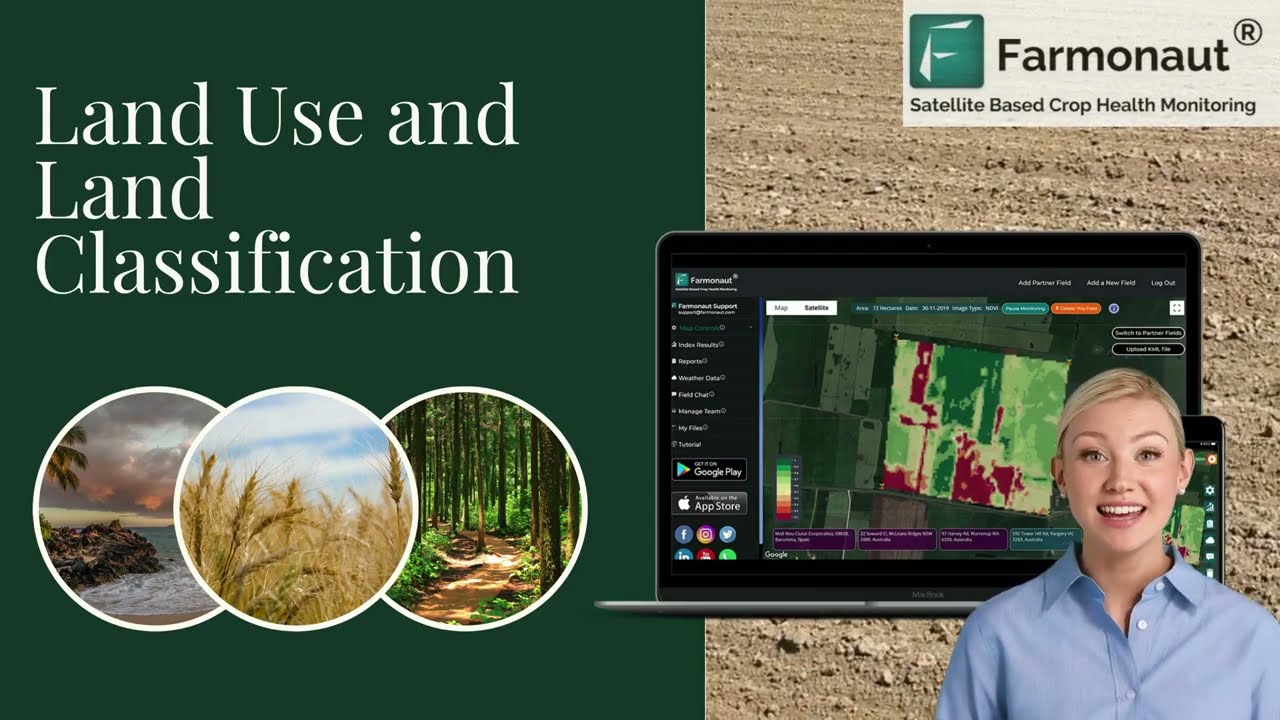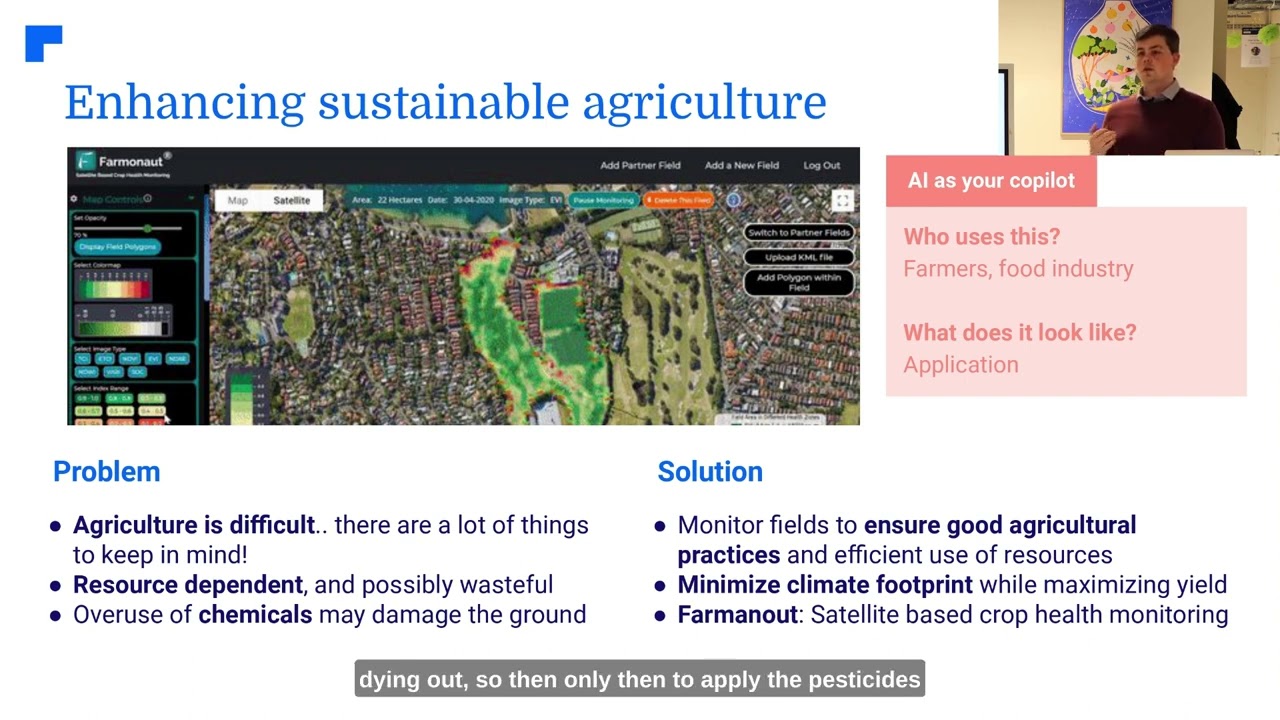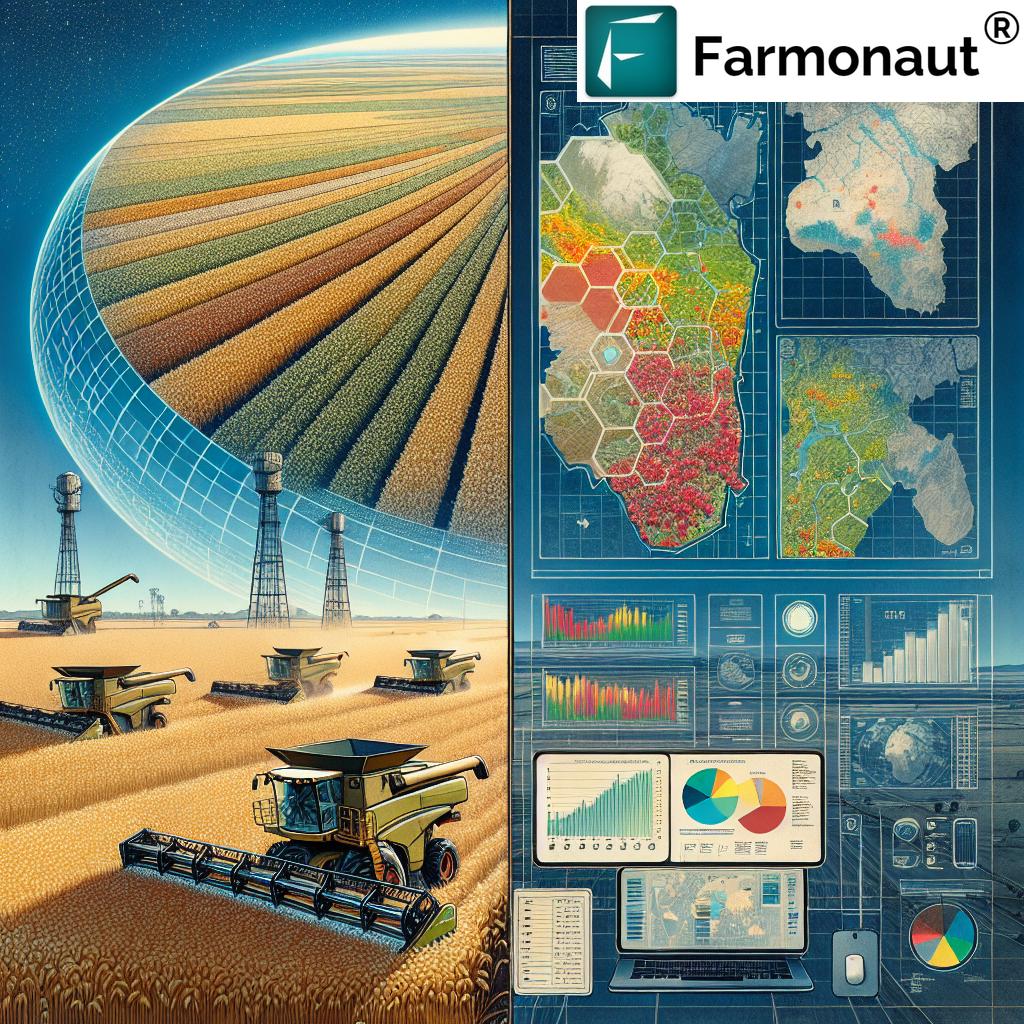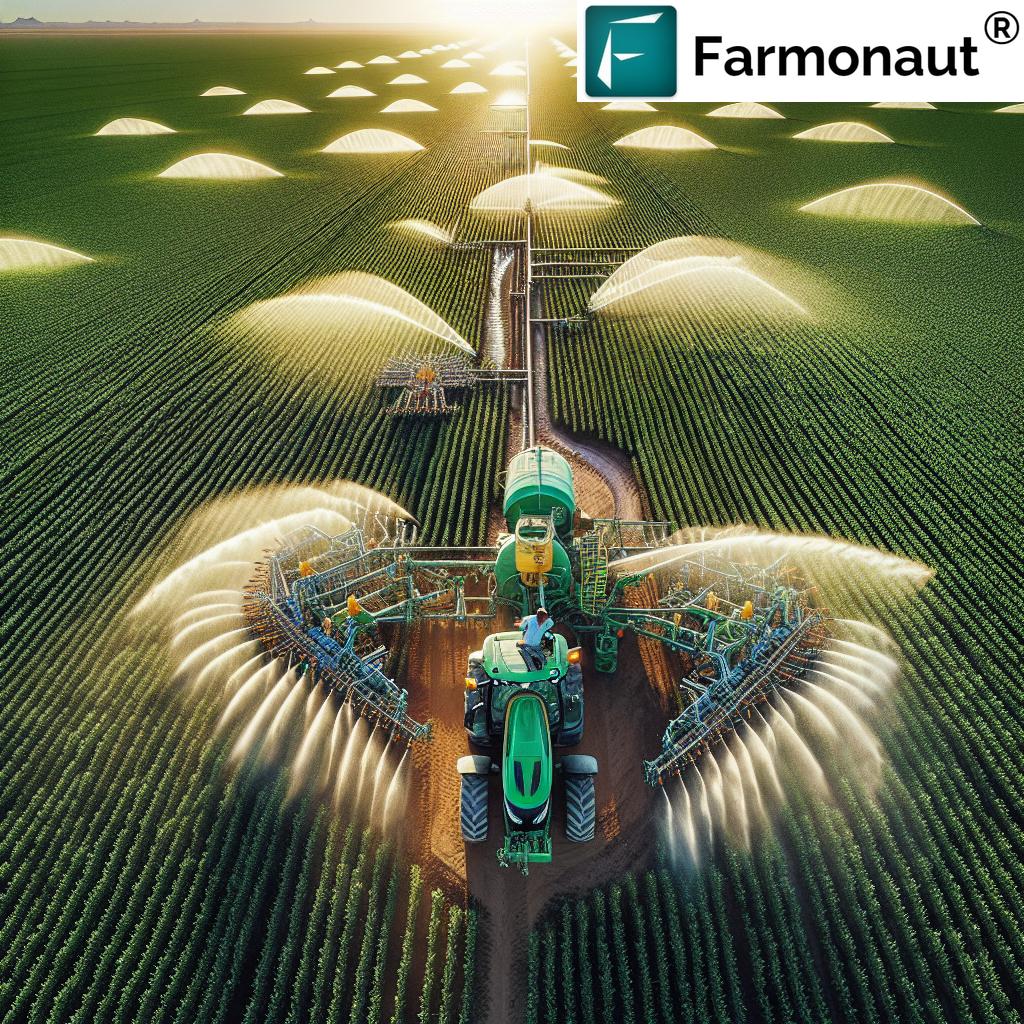EUDR Compliance & Deforestation Monitoring in Uganda: Technologies, Challenges & Sustainable Solutions
“Uganda lost over 63,000 hectares of forest annually between 2015-2020, highlighting urgent EUDR compliance needs.”
Table of Contents
- Introduction: Why EUDR Compliance Matters for Uganda
- Understanding the EUDR Compliance Requirements
- Challenges of EUDR for Farmers with a Focus on Uganda
- Deforestation Monitoring Technologies for EUDR Compliance
- Traceable Supply Chains in Agriculture & Forestry
- Integrating Monitoring Technologies with Supply Chain Transparency
- Support Systems for Smallholder Farmers
- Comparative Compliance & Monitoring Overview Table
- How Farmonaut Empowers EUDR Compliance and Monitoring
- Frequently Asked Questions
- Conclusion: Building a Deforestation-Free Future
Introduction: Why EUDR Compliance Matters for Uganda
The European Union Deforestation Regulation (EUDR) is redefining how global supply chains address environmental responsibility, compliance, and sustainability. With its enforcement from December 30, 2025, every commodity—from coffee and cocoa to cattle and wood—imported into the EU must now be certified as deforestation-free and not linked to forest degradation. For Uganda, a country renowned for its rich forests and agricultural exports, these requirements bring both challenges and opportunity.
Uganda’s agricultural sectors and vast forestry resources are at the heart of its economy. However, between 2015 and 2020, Uganda experienced an alarming annual loss of over 63,000 hectares of forest, raising urgent red flags regarding compliance with EU deforestation regulation. Without robust monitoring, transparent supply chains, and tailored support for smallholder farmers, Uganda risks being sidelined in the lucrative EU market.
In this detailed guide, we break down the essentials of EUDR compliance, examine the role of advanced deforestation monitoring technologies, and highlight how traceable supply chains can help Uganda’s agriculture and forestry sectors meet these pressing environmental standards. Whether you are a policymaker, exporter, farmer, or supply chain operator, this resource equips you with actionable insights, practical strategies, and cutting-edge technological solutions for achieving EUDR compliance in Uganda.
Understanding the EUDR Compliance Requirements
The European Union Deforestation Regulation (EUDR) represents a major international drive to curb the environmental impact of imported commodities. It sets a global benchmark for traceable supply chains, deforestation-free sourcing, and active demonstration of sustainable practices.
Key EUDR Compliance Requirements
- Deforestation-Free Commodities: All products and related goods—including coffee, cocoa, soy, cattle, oil palm, rubber, wood, leather, chocolate, and furniture—must be proven to not originate from land that was deforested or environmentally degraded after December 2020.
- 100% Traceability of Supply Chain: Each operator and trader must demonstrate and document the exact origin, production timeline, and history of their commodities—from farm or forest plot to market—ensuring the entire chain is verifiable and deforestation-free.
- Due Diligence & Risk Assessments: Businesses must conduct and maintain ongoing due diligence reports, deploying technology and rigorous checks to prevent deforestation-linked products from entering the EU.
- Severe Penalties for Non-Compliance: Companies that fail to comply with EUDR face fines up to 4% of annual turnover within a member state, or potential exclusion from the EU market.
To meet these requirements, Ugandan exporters and stakeholders must integrate verifiable data, utilize up-to-date monitoring mechanisms, and build traceable supply chains in agriculture and forestry.
“EUDR requires 100% traceability for agricultural imports, making deforestation monitoring vital for Ugandan exporters.”
Challenges of EUDR for Farmers with a Focus on Uganda
While the EUDR promises substantial environmental benefits, it poses significant challenges, particularly for smallholder farmers in Uganda. Let’s break down these core hurdles:
- Resource Limitations: Many smallholders have restricted access to the technical tools, data systems, and financial resources necessary to document and trace commodities from land plot to shipment.
- Documentation and Traceability Burden: The need to provide verifiable information regarding the origin and history of produce (including exact plot mapping and cultivation timeline) can be overwhelming for Uganda’s fragmented farming communities.
- Costs of Compliance: Certification processes, robust monitoring systems, and hiring experts or consultants can be prohibitively expensive for both smallholder and mid-size farmers.
- Knowledge & Technology Gaps: Many farming communities in Uganda lack awareness of EU regulations and access to the latest monitoring technologies—from satellite imagery to blockchain-based traceability.
- Adapting Traditional Practices: Ugandan farmers operating small plots have historically relied on experience and manual record-keeping; the EUDR demands a new, data-driven approach that transforms agriculture, farming, and forestry.
Meeting the challenges of EUDR for farmers requires not just access to advanced tools but also coordinated support systems, funding, and training—especially for the most vulnerable groups.
Deforestation Monitoring Technologies for EUDR Compliance
Robust deforestation monitoring technologies are at the core of fulfilling EUDR compliance in Uganda. By leveraging sophisticated tools, we can detect, measure, and document changes in forest cover, support accurate reports, and streamline due diligence.
Satellite Remote Sensing & Imagery for Forest Monitoring
-
What It Is:
- Using high-resolution, multispectral satellite imagery to monitor forests and detect even small changes in vegetation over vast areas.
-
Key Benefits:
- Provides near real-time data to quickly spot unlawful or excessive clearing.
- Reduces manpower and costs—especially useful for large, remote Ugandan landscapes.
- Supports automated alerts for suspected illegal logging or land-clearing activities.
-
Uganda-Specific Impact:
- Reduces reliance on physical inspections in remote or dangerous areas.
- Aids government bodies and exporters in ensuring compliance with EUDR’s deforestation-free commodity requirements.
Drones & Aerial Detection Methods
-
What It Is:
- High-resolution aerial imagery captured by drones (UAVs) offers detailed, geo-referenced data about individual forest plots and land changes.
-
Key Benefits:
- Enables regular, on-demand aerial surveys across smallholder-dominated landscapes.
- Quickly detects subtle changes or illegal activities, supporting both government monitoring and exporter verification needs.
- Minimizes ecological disturbance compared to large, manned aircraft.
-
Uganda-Specific Impact:
- Accessible solution for local NGOs and cooperatives to supplement satellite data.
Internet of Things (IoT) Sensors and Real-time Data
-
What It Is:
- Networked sensors deployed in forests and farms, capturing environmental data like soil moisture, microclimate, and tree growth.
-
Key Benefits:
- Delivers continuous, real-time monitoring—essential for early detection of sudden deforestation activities or forest degradation.
- Automates alerts about irregular environmental patterns, supporting speedy responses by authorities.
-
Uganda-Specific Impact:
- Empowers local actors and cooperatives with real-time, actionable insights, boosting both regulatory and market trust.
AI and Machine Learning for Advanced Monitoring & Detection
-
What It Is:
- AI-powered platforms analyze satellite imagery, drone data, and sensors, automating the detection of forest changes and predicting deforestation risks.
-
Key Benefits:
- Rapid identification of deforestation hotspots, trend prediction, and prioritization of at-risk areas.
- Automated reporting and analytics aid exporters and regulators in meeting tight compliance timelines.
- Enables scalable solutions—cost-effective for large areas, but also now accessible to smallholder settings.
-
Uganda-Specific Impact:
- Transforms monitoring from manual, sporadic checks to continuous, data-driven oversight of Uganda’s agricultural frontiers.
Global Forest Watch (GFW) and Open Deforestation Data Platforms
- Ugandan stakeholders can access GFW’s near real-time forest cover data to supplement their local monitoring.
- Combining open-source platforms with proprietary monitoring creates resilient, multi-layered oversight for EUDR compliance.
Traceable Supply Chains in Agriculture & Forestry
Unbroken supply chain transparency is now essential for access to the EU market. The EUDR’s requirement for deforestation-free commodities means that every actor—from Uganda’s smallholder farmer to major exporter—must trace their products with confidence.
- Comprehensive Traceability: Blockchain technology, such as that offered by Farmonaut’s Traceability Solution, ensures that every batch of coffee, cocoa, or timber is accounted for with irrefutable digital records. This enhances trust for buyers and meets EUDR’s need for immutable data on product journey and origin.
- Production Timeline Management: Transparent record-keeping systems—whether automated or manual—capture data from planting, harvesting, storage, and shipment. These timelines must match supply chain documents, satellite imagery verification, and on-ground observation to avoid compliance risks.
- Data Integration: Platforms like Trase (for global trade mapping) and Farmonaut (for farm-level traceability) empower Ugandan exporters to provide documentation that is recognized and trusted by European Union authorities.
Learn more about blockchain-based traceability for the agricultural and textile sectors in Uganda (see use cases and benefits here).
Integrating Monitoring Technologies with Supply Chain Transparency
Meeting EUDR compliance requirements is rarely achieved with a single approach. The most robust systems are those where deforestation monitoring technologies and transparent, traceable supply chains operate in sync.
- Real-Time Alerts: Satellite and AI-driven detection, combined with supply chain records, can immediately flag a lot or shipment that may be linked to recent deforestation activities or unsanctioned land conversion.
- Holistic Verification: Digital dashboards integrate aerial imagery, IoT streams, and production data, helping both authorities and businesses demonstrate due diligence and compliance.
- Audit Trails: Blockchain records and automated logs ensure any product’s journey is secure, immutable, and verifiable from plot to port.
Discover how integrating these technologies delivers large-scale farm and plantation management capabilities—a game-changer for Ugandan agribusinesses seeking EUDR assurance.
Support Systems for Smallholder Farmers in Uganda
Given the unique challenges faced by Ugandan smallholder farmers, tailored support systems are vital. These initiatives not only enable compliance—but also keep Uganda’s most at-risk farming operations competitive:
-
Access to Remote Sensing Platforms:
Easy-to-use satellite monitoring (via mobile apps and web platforms) empowers even the smallest farmers to document land use, production dates, and report risks in real time.
Learn more about Farmonaut’s inclusive mobile and web solutions for responsible farm management. -
Training and Technical Resources:
NGOs, government extension agencies, and agribusinesses must facilitate ongoing education on EUDR requirements, supply chain documentation, technology adoption, and reporting practices. -
Affordable Certification Support:
Satellite-based verification services reduce the cost of farm documentation for loans and insurance, making certification and formal financing more accessible for Uganda’s rural communities. -
Financial and Policy Incentives:
Direct subsidies, group certification schemes, and digital infrastructure investments help bridge the gap for marginalized farmers hit hardest by EUDR regulatory shifts.
How Farmonaut Empowers EUDR Compliance and Monitoring
We at Farmonaut are committed to making precision agriculture, compliance, and sustainability accessible and affordable—especially for smallholder and large-scale users in Uganda and beyond. Our unique blend of technologies is tailored to solve the exact challenges posed by EUDR:
- Satellite-Based Farm Monitoring: Our platform uses multispectral satellite imagery to provide real-time insights into crop and forest health, supporting quick detection of deforestation activities and land-use changes.
- AI-Based Advisory & Analytics: Our Jeevn AI system automates crop health alerts, weather risk predictions, and provides actionable recommendations for both small-scale and commercial farms.
- Blockchain-Based Traceability: Seamlessly trace the journey of every product or raw material with our secure, digital ledger, ensuring full supply chain transparency—a cornerstone of EUDR compliance requirements. See the benefits for Ugandan agriculture here.
- Fleet and Resource Management: Optimize agricultural logistics, reduce wastage, monitor fleets, and enhance certification-readiness using our fleet management tools.
- Carbon Footprinting: Track your agricultural operation’s emissions and demonstrate environmental impact mitigation via real-time carbon footprint tracking—crucial for meeting advanced EU market expectations.
- Developer API Access: Integrate high-frequency satellite and weather data into external systems or research platforms using our dedicated Farmonaut API and Developer Documentation.
Our subscription-based model and modular services ensure all stakeholders—from individual farmers to corporate clients—can participate in EUDR compliance without steep financial or technical barriers.
To experience affordable, world-class compliance solutions—get started today.
Comparative Compliance & Monitoring Overview Table
| EUDR Requirement | Uganda’s Current Status | Recommended Monitoring Technologies | Estimated Compliance Level (%) |
|---|---|---|---|
| Traceable Supply Chain | Fragmented, weak farmer-to-exporter tracking; limited digital records | Blockchain-based traceability, mobile/web supply chain management apps | 35% |
| Deforestation-Free Sourcing | Moderate adoption; satellite-based verification limited to pilot projects; documentation barriers for smallholders | Satellite remote sensing, drones, field audits | 40% |
| Environmental Impact Reporting | Basic reporting for large agribusinesses; little or no standardized reporting for smallholders | IoT sensors, carbon footprint tracking, integrated compliance dashboards | 20% |
| Forest Degradation Detection | Visual/manual checks predominate; slow response to illegal activities | AI-powered satellite/drones, open data platforms, rapid alerting systems | 30% |
| Full Geolocation of Production Plots | Emerging use of GPS mapping among exporters, minimal among smallholders | GPS-enabled mobile apps, satellite plot verifications | 25% |
Note: These compliance levels are estimated as of early 2024; proactive investments, capacity-building, and tech adoption are essential for Uganda’s rapid progress toward full EUDR alignment.
Frequently Asked Questions (FAQ) – EUDR, Deforestation Monitoring & Ugandan Exports
What is the European Union Deforestation Regulation (EUDR)?
The EUDR is an EU-wide regulation effective from December 2025 that prohibits the import into the EU of products or commodities linked to deforestation or forest degradation after 2020. It covers agricultural, forestry, and related sectors and enforces severe penalties for non-compliance.
Which Ugandan products are impacted by EUDR compliance requirements?
Key commodities exported from Uganda such as coffee, cocoa, timber, wood, cattle, and related processed goods (including leather, chocolate, and furniture) all fall under EUDR scope.
Why does Uganda face special challenges under EUDR?
Uganda relies heavily on smallholder farmers, has fragmented digital supply chains, and faces resource constraints for deploying advanced monitoring and certification systems. Bridging knowledge gaps and ensuring affordable technology access are top priorities.
What monitoring methods are most cost-effective in Uganda for EUDR compliance?
Satellite remote sensing and drones offer the best coverage-to-cost ratio, while mobile-based GPS logging and blockchain traceability bring needed transparency to rural supply chains.
How can smallholder farmers afford and access these technologies?
Platforms like Farmonaut democratize access by offering mobile and web interfaces, affordable subscriptions, and modular solutions designed for both individuals and cooperatives. Training, subsidies, and government/NGO support further reduce the cost barrier.
How is environmental impact reporting handled for EUDR compliance?
Operators and traders must provide emissions and land use change data. Using tools like Farmonaut’s Carbon Footprinting module, exporters can automate these reports and track sustainability performance over time.
Where can Ugandan exporters get more help or start using Farmonaut?
Ugandan businesses can access Farmonaut online, download the Android app, or use the iOS version. Developers may access Farmonaut’s API and developer docs for custom integrations.
Conclusion: Building a Deforestation-Free Future for Uganda’s Exports
The EUDR marks a new era for Uganda’s agriculture, farming, and forestry sectors, intertwining sustainability with access to global markets. While compliance poses undeniable challenges—especially for smallholder farmers—the strategic adoption of advanced deforestation monitoring technologies, traceable supply chains, and targeted support systems can transform these hurdles into catalysts for economic growth and environmental stewardship.
By deploying satellite imagery, leveraging AI, and embracing transparency, Ugandan exporters and policymakers can demonstrate deforestation-free sourcing, access premium markets, and preserve Uganda’s invaluable forests for generations to come.
For those ready to lead in this transformation, innovation and education are vital. To experience affordable, world-class compliance solutions for your farms, forests, or supply chains—explore Farmonaut today.




















